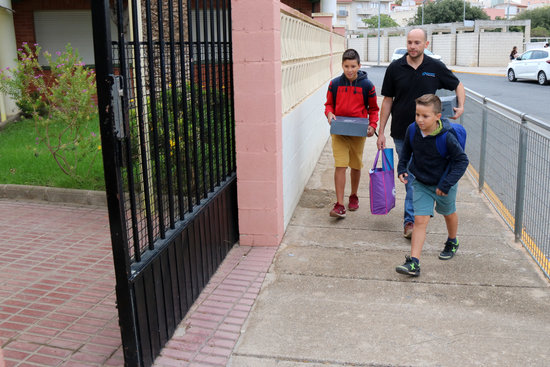How Catalonia's education system works
With students all over the country returning to the classroom, we provide an overview of how Catalan schools function

As it is everywhere around Europe, basic education is compulsory in Catalonia. However, a system in which more than 72,000 teachers provide classes every year to over 1.5 million students is quite a complex matter.
Any country's school system is both intricate and sophisticated, and there is not the room here to go into the fine details. Yet, what follows is a broad overview of how the education system works in Catalonia.
While the education system is subject to Spanish legislation, the Catalan government has exclusive powers over education, as it does over other key areas, such as health, culture, territorial organization, and the budget.
As a result, all state education in Catalonia is in Catalan, with Spanish taught as a foreign language. It is a model that has come in for criticism from some elements in Spain, but the Catalan authorities insist that it ensures all children leave school bilingual.
While some start early and some stay on, as in all parts of Spain, education is compulsory for everyone in Catalonia between the ages of 6 and 16. While the cost of compulsory education is covered by the taxpayer, parents pay for books and materials.
How is the education system organized?
The system is divided into cycles: infant education, primary education, secondary education (including compulsory secondary education, baccalaureate and middle grade vocational training), upper grade vocational training, and university education.
What ages are covered by each cycle?
Infant education has two cycles from ages 3 to 6. Primary education has three cycles between the ages of 6 and 12. Compulsory secondary education (known as ESO) has two cycles between the ages of 12 and 16.
What types of schools are there?
There are three types of schools: state schools, which are publicly funded, private schools, which get no funding and are paid for by fees, and semi-private schools (known as concertada schools), which get state grants and so are cheaper than private schools.
How are schools set up?
Private schools have more freedom about how they organize themselves, but state and semi-private schools all have a similar structure that involves a lot of people, from secretaries to caretakers, to keep them functioning beyond just the teaching staff.
Who works in schools?
Every school has a director, who is the person with overall responsibility for running the school. Tutors are teachers responsible for a group of students and liaise with families. The pedagogical team is made up of teachers and decides the school’s pedagogical matters.
How are parents involved in schools?
There are parents on the school council, along with teachers, services staff and local government representatives. The council takes part in managing the school. Then there is the parents' association, which is made up of parents and is responsible for organizing extra-curricular activities.
When are schools open?
The school year goes from September to June, and is split into three terms. The first is from September to the Christmas holidays (late December), which last 15 days, the second is from January to the Easter holidays (April), which last 10 days, and the third is from the Easter holidays to the end of June.
Some other facts about schools in Catalonia
-
While education is not compulsory for children under six, over 90% of children attend school from the age of 3.
-
In ESO (compulsory secondary education), children are taught in mixed ability classes and must repeat years if they haven't progressed enough.
-
There are five types of baccalaureate: Arts, Natural and Health Sciences, Science and Engineering, Social Sciences and Humanities.
-
Students wishing to go on to Higher Education take a general university entrance exam in June, which is known as the Selectivitat.
-
While the number varies from year to year as some schools close and others open, there are some 4,000 schools in Catalonia.